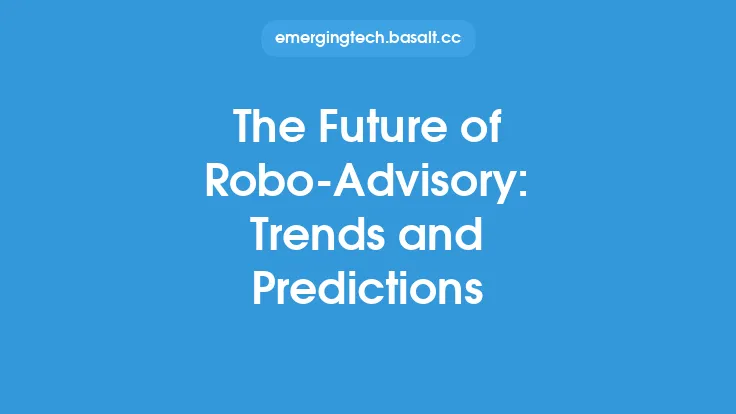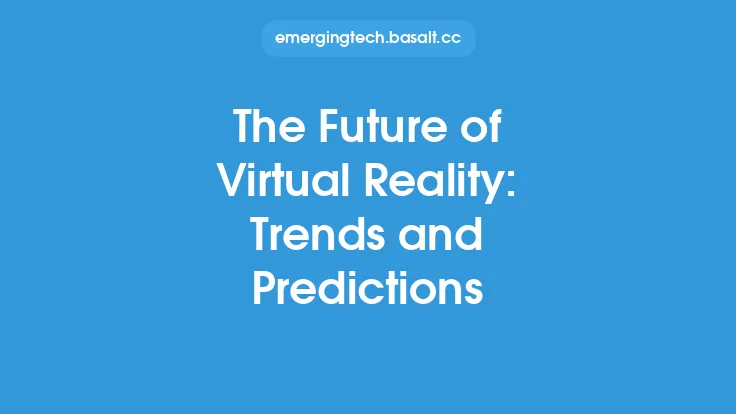The concept of tokenomics has been gaining significant attention in recent years, particularly with the rise of blockchain technology and the increasing popularity of cryptocurrencies. Tokenomics refers to the study of the economics and design of tokens, which are digital assets issued on a blockchain network. As the industry continues to evolve, it's essential to explore the trends and predictions that will shape the future of tokenomics.
Introduction to Tokenomics Trends
Tokenomics trends are influenced by various factors, including technological advancements, regulatory developments, and market demand. One of the primary trends in tokenomics is the increasing focus on utility tokens, which are designed to provide a specific use case or functionality within a particular ecosystem. Utility tokens are expected to play a crucial role in the development of decentralized applications (dApps) and decentralized finance (DeFi) platforms. Another trend is the growing importance of tokenomics in the development of non-fungible tokens (NFTs), which are unique digital assets that can represent ownership of physical or digital items.
Predictions for the Tokenomics Industry
Several predictions can be made about the future of the tokenomics industry. One prediction is that tokenomics will become more sophisticated, with the development of more complex token models and incentive structures. This will be driven by the need for tokens to provide more value to users and to create sustainable ecosystems. Another prediction is that tokenomics will play a key role in the development of central bank digital currencies (CBDCs), which are digital versions of fiat currencies issued by central banks. CBDCs are expected to use tokenomics principles to design and implement their token economies.
The Role of Blockchain in Tokenomics
Blockchain technology is the foundation of tokenomics, and its development will continue to shape the industry. The increasing adoption of blockchain technology will lead to more efficient, secure, and transparent token economies. Blockchain scalability solutions, such as sharding and off-chain transactions, will enable faster and more cost-effective token transactions. Additionally, the development of blockchain interoperability protocols will allow for the seamless interaction between different token economies, creating a more connected and integrated ecosystem.
Tokenomics and Regulatory Developments
Regulatory developments will play a crucial role in shaping the future of tokenomics. Governments and regulatory bodies are increasingly recognizing the importance of tokenomics and are developing frameworks to regulate the industry. The introduction of clear and concise regulations will provide clarity and certainty for token issuers, investors, and users. However, over-regulation can stifle innovation and hinder the growth of the industry. Therefore, it's essential to strike a balance between regulation and innovation, allowing tokenomics to flourish while protecting users and maintaining market integrity.
The Impact of Tokenomics on Traditional Finance
Tokenomics is expected to have a significant impact on traditional finance, particularly in the areas of payments, lending, and investing. Token-based systems will enable faster, cheaper, and more secure transactions, disrupting traditional payment systems. Tokenized assets will also provide new investment opportunities, allowing for the creation of new financial instruments and products. Furthermore, tokenomics will enable the development of decentralized lending platforms, providing access to credit for underserved populations and creating new opportunities for financial inclusion.
The Future of Token Design
Token design will continue to evolve, with a focus on creating more sophisticated and sustainable token economies. Token designers will need to consider factors such as token supply, demand, and velocity, as well as the creation of incentive structures that promote desired behaviors. The development of new token models, such as token-curated registries and token-generated events, will provide new opportunities for innovation and experimentation. Additionally, the use of artificial intelligence and machine learning will enable the creation of more dynamic and adaptive token economies, allowing for real-time optimization and improvement.
Conclusion
In conclusion, the future of tokenomics is exciting and rapidly evolving. As the industry continues to grow and mature, we can expect to see new trends, predictions, and developments emerge. The increasing focus on utility tokens, the growing importance of tokenomics in NFTs, and the development of more sophisticated token models will shape the industry. The role of blockchain, regulatory developments, and the impact of tokenomics on traditional finance will also be crucial in determining the future of the industry. As we move forward, it's essential to stay informed and adapt to the changing landscape of tokenomics, ensuring that we can harness its potential to create a more efficient, secure, and transparent financial system.





